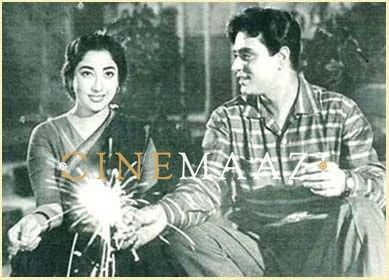This section is for paid subscribers only. Our subscription is only $3700/- for one full year.
You get unlimited access to all paid section and features on the website with this subscription.
Subscribe to read full article
This section is for paid subscribers only. Our subscription is only $37/- for one full year.
You get unlimited access to all paid section and features on the website with this subscription.
Not ready for a full subscription?
You can access this article for $2, and have it saved to your account for one year.
- GenreDrama
- FormatColour
- LanguageHindi
- Run Time105 min
- Gauge35 mm
Based on the poetry, critical essays and other fragments of writing by the poet Gajanan Madhav Muktibodh, Mani Kaul’s Satah Se Uthata Aadmi loosely revolves around three men: Ramesh, the embodiment of Muktibodh, and his companions and interlocutors Keshav and Madhav.
Ramesh is a lonely man, tormented by the hope that someone who understands him will arrive soon. He fades in and out of reality, unable to confront the contradictions between his inner life and the pragmatic necessities of his life as a married man. The fragmented narrative pans over discontinuous landscapes and times as Keshav and Ramesh explore desolate places, discussing their disillusionment with post-independence modernity in India. Both seem to be scared to confront their own subjectivity. Together, the friends ruminate about suicide and the abrupt end it brings to a life, remarking on a life being a living history, rather than just a story.
Exploring the lives of the three, the film speculates about the inner life of a poet, and how it runs into paradoxes when confronted with the demands made upon the poet by the world he occupies. Is the poet unproductive, or is he employed in labour of his own? On their travails, Keshav meets a teacher at a local madrasa, and has a long, rambling conversation with him. The two discuss the idea of religion and belief, and try to determine whether one’s location determines these. After talking to him, Keshav is troubled by his own ineffectuality. He is unemployed, and makes no effort to change his situation, paralysed by the wide gap between his life and his beliefs.
The women in their households seem similarly trapped. In one telling scene, one of their wives stares out of the window at a passing train as she sits in one place, unmoving.
As the discontinuous narrative proceeds, it touches upon larger themes like politics and corruption, and the compromise of ideals by individuals. The friends rely on each other for financial support, and when Keshav visits Ramesh, he tells him that he holds great importance for his life as a poet: Keshav is Ramesh’s ideal audience. Though Ramesh is dissatisfied with his own poetry, Keshav tells him that he admires him for his refusal to compromise, at least in what he writes. Even as the two discuss the aesthetics of poetry, their political beliefs and what shapes artistic expression, Ramesh feels keenly the failure of his own life, and slowly, Muktibodh the poet seems to be taking shape for the audience in bits and pieces.
Along the way, they meet other characters like Krishnaswaroop and Ramnarayan. Krishnaswaroop is indebted to the rich Ramnarayan, deeply obsequious in his presence, and hateful of him in his absence. It is revealed that the two are, in fact, similar people. Ramnarayan reveals his family’s story, and his slow descent into addiction when he speaks to Keshav.
The narrative culminates in an exploration of the alienation experienced by all who are oppressed by their own hunger. Each character in the film lacks freedom and organization, and as the narrative dissolves into text and still images of Muktibodh, the radical force of the poet’s thought comes to the fore.
Cast
-
M K Raina
Keshav -
Vibhuti Jha
Madhav -
Bharat Gopy
Ramesh -
Om Puri
Narrator/Voice-over
Crew
-
BannerInfrakino Film Prod, Bombay , Madhya Pradesh Kala Parishad
-
Director
-
Producer
-
Music Director
-
Cinematography
-
Editing
-
Sound Recording/ Audiography
-
Re-recordist/ Sound Mixing
-
Writer








.jpg)



